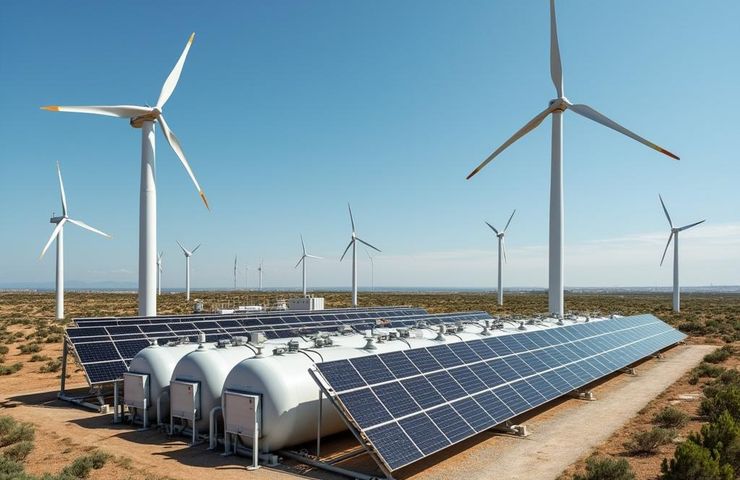Green Hydrogen Production Gets a Reality Check: Where and How It’s Cost-Effective
Can green hydrogen ever actually compete on cost? That question’s been bouncing around boardrooms, conference panels, and government white papers…


Can green hydrogen ever actually compete on cost? That question’s been bouncing around boardrooms, conference panels, and government white papers for years. Now, thanks to a study from Enertis Applus+—an engineering consultancy out of Spain—we’ve finally got a solid idea of what it’ll take to make it happen.
A Global Look with Local Insights
Released on June 11, 2025, the report digs deep into how viable green hydrogen really is around the world. The team modeled systems across 10 different locations—from the blazing deserts of Northern Chile to the breezy plains of Texas—looking at a mix of solar PV, wind farms, and battery energy storage systems (BESS). The goal? To figure out the Levelized Cost of Hydrogen (LCOH) when everything is powered entirely off-grid by renewables.
The key takeaway? Green hydrogen isn’t a one-size-fits-all solution. Its cost-effectiveness hinges on three big factors: how often electrolyzers are working (aka the capacity factor), how cheaply you can generate electricity (LCOE), and—no shock here—how good the financing terms are.
Location, Location, Location
According to the study, Spain turned out to be a star performer in the study, especially the region of Cádiz. There, the combo of sunshine and steady wind helped drop LCOH to below $3.6/kg. Texas wasn’t far behind—plenty of land, loads of sun, and consistent wind made it a perfect setup. In both cases, extra renewable energy paired with BESS helped electrolyzers hum along smoothly and kept hydrogen production costs low.
Over in Northern Chile, things didn’t go quite as planned—even though the solar radiation is about as good as it gets anywhere on Earth. Trouble was, the wind patterns weren’t as reliable, which made it tricky to balance energy sources and pushed costs up. Interestingly, when researchers dialed back the wind component and leaned heavily on solar alone, the numbers improved. Sometimes, doing less actually works better.
Romania, on the other hand, faced a tougher path. The sun and wind just didn’t show up in harmony, which led to lower usage of electrolyzers and higher LCOH. It’s a reminder that even strong political support can only go so far if nature’s not on your side.
Technology Does the Heavy Lifting
The actual method you use to make hydrogen—by splitting water through electrolysis—also makes a big difference. There’s the tried-and-true Alkaline Water Electrolysis, great for steady, base-load operation. Then there’s the newer, slicker (and pricier) Proton Exchange Membrane (PEM) electrolysis, which can handle ups and downs in power more gracefully.
How you pair these with renewables can make or break a project. For example, in places where electricity is cheap—like parts of Australia or the U.S.—oversizing your energy source to keep those electrolyzers running longer can pay off. But in pricier regions, you’ve got to plan that balance a lot more carefully.
It’s More Than Just Gadgets and Gears
Let’s be real: tech is just one piece of the puzzle. Green hydrogen’s cost-effectiveness isn’t purely about engineering—it’s also about economics and infrastructure. The study shows that financing factors like up-front capital (CAPEX), ongoing operational costs (OPEX), and even the discount rate can shift the final LCOH by as much as 40%. That’s not peanuts.
The maturity of the local supply chain, how easy it is to get permits, the cost and availability of land—all of that feeds into the big picture. Areas that are already industrial hubs and open to hydrogen projects have a clear leg up.
Zooming out, the potential is massive. If we can get this right, green hydrogen could cut emissions from the trickiest industries to clean up—think chemical manufacturing, fertilizer production, and even long-haul trucking. But scaling up won’t come without headaches. Land-use conflicts, water rights issues, and supply chain shocks are all very real risks.
Policy: Smart Support Over Blanket Subsidies
So what should policymakers actually do with all this? For starters, forget the idea of a one-size-fits-all strategy. The report makes it crystal clear: governments need tailored incentives, smarter permits, and site-specific support packages. It’s not just about pumping money into hydrogen—it’s about knowing where, when, and how to do it to outcompete fossil fuels in a real-world market.
Bottom Line: Potential Is There—With Caveats
Yes, green hydrogen can be cost-competitive. But only if conditions are right. That means strong sun paired with steady wind, supportive infrastructure, and investors with a long-term lens. Where any of those come up short—like inconsistent energy, high local costs, or sketchy policies—the economics just don’t hold up.
This study from Enertis Applus+ doesn’t promise a silver bullet, but it does lay down a roadmap—a clear, data-driven snapshot of what it’ll take to make green hydrogen more than just a buzzword.
So next time someone pitches you the hydrogen revolution, hit pause and ask: What’s the local energy mix? How stable are the regulations? Is the sun shining while the wind’s blowing? Because in this game, the details are everything.
What's Your Reaction?


























































